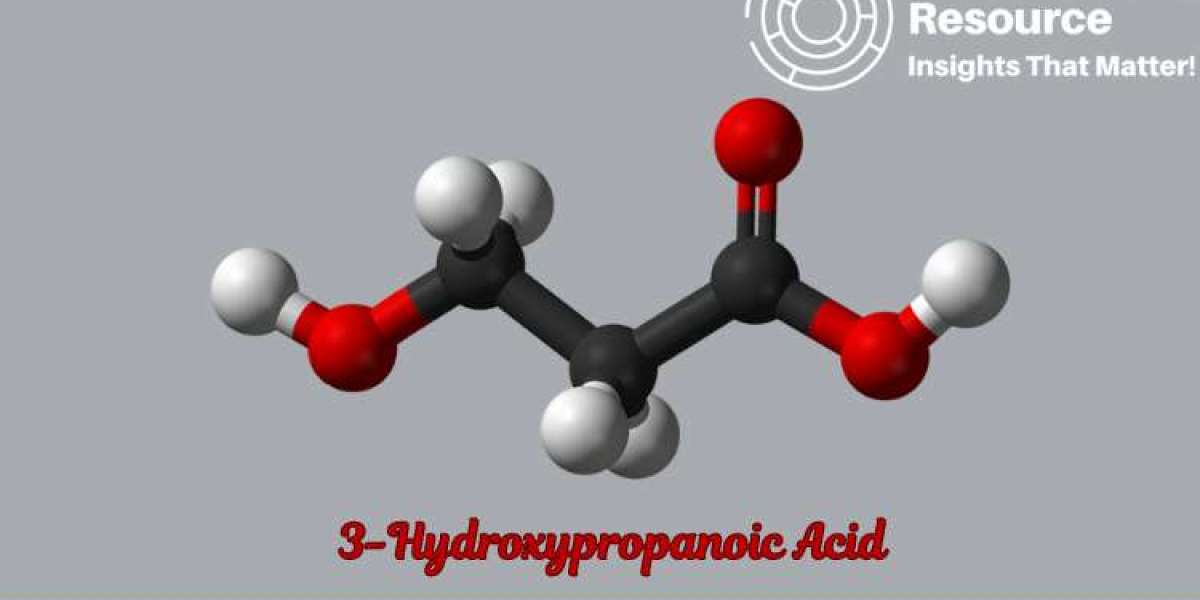3-Hydroxypropanoic acid (3-HP) is a valuable biochemical compound used as a precursor in the production of bio-based plastics, solvents, and other high-value materials. With its applications spanning multiple industries, 3-HP has attracted attention for its potential to support sustainable chemical production. However, due to the complexity of the production process and the costs associated with raw materials and energy, understanding and managing the cost structure of 3-HP is crucial for businesses aiming to maintain a competitive edge. Procurement Resource provides detailed 3-Hydroxypropanoic Acid Production Cost Reports, offering companies the insights needed to optimize costs and improve profitability.
Why 3-Hydroxypropanoic Acid is Important
3-Hydroxypropanoic acid, also known as 3-HP, is a key building block in the biochemical industry, primarily used to produce bio-based chemicals like acrylic acid and biodegradable plastics. Its applications are broad, extending into adhesives, coatings, resins, and personal care products. Additionally, as a bio-based product, 3-HP supports the shift toward sustainable production, offering an environmentally friendly alternative to petrochemical-based compounds.
Request a Free Sample for 3-Hydroxypropanoic Acid Production Cost Reports – https://www.procurementresource.com/production-cost-report-store/3-hydroxypropanoic-acid/request-sample
Given the rising demand for green chemicals, efficient production of 3-HP has become increasingly important. Understanding production costs allows companies to maximize efficiency, manage expenses, and tap into the growing market for sustainable chemicals.
Key Factors Driving 3-Hydroxypropanoic Acid Production Costs
The production cost of 3-Hydroxypropanoic acid depends on several factors, including raw materials, energy requirements, labor, technology, and regulatory compliance. Procurement Resource’s 3-HP Production Cost Reports provide a comprehensive analysis of each cost component, helping businesses identify areas for improvement and cost savings.
1. Raw Material Costs
Producing 3-HP involves using specific feedstocks, often derived from renewable sources like biomass, glucose, or glycerol. The cost and availability of these raw materials are essential factors in the production cost structure.
Renewable Feedstocks: Biomass, glycerol, and glucose are commonly used in bio-based 3-HP production. While renewable feedstocks offer sustainability advantages, their prices fluctuate based on agricultural production, regional availability, and global demand.
Supply Chain and Market Dynamics: The cost of renewable feedstocks is influenced by supply chain stability and the demand for these resources in other industries, such as biofuels and food production.
Maintaining a stable supply of cost-effective raw materials is essential for 3-HP producers. Strategic sourcing and establishing relationships with reliable suppliers can help manage costs and reduce the risk of supply disruptions.
2. Energy Costs
3-HP production requires significant energy input, especially in fermentation and purification processes. The cost of energy is, therefore, a critical factor in the overall production expense and can vary based on the local energy market and production technologies used.
Electricity and Heating Costs: Energy is required to maintain optimal conditions for microbial fermentation, a common method for producing 3-HP. The cost of electricity and heating can vary significantly by region and is affected by local energy policies and fuel prices.
Energy-Efficient Technologies: Using energy-efficient technologies or renewable energy sources, such as solar or wind, can help reduce production costs and support sustainable practices.
Optimizing energy consumption is crucial for managing production costs in 3-HP production. Many companies are investing in energy-efficient equipment and exploring alternative energy sources to lower their energy expenses and promote environmental responsibility.
3. Labor and Operational Costs
Labor is an essential cost component in 3-HP production, particularly because highly trained personnel are required to operate specialized equipment, monitor fermentation, and ensure quality control. Operational costs also include facility maintenance, equipment repair, and adherence to safety standards.
Read the Full Report – https://www.procurementresource.com/production-cost-report-store/3-hydroxypropanoic-acid
Skilled Labor: Producing 3-HP involves advanced biochemical processes that require skilled technicians and quality assurance staff to ensure product consistency and regulatory compliance. Regional variations in labor costs can affect production expenses.
Quality Control and Compliance: Adhering to strict quality standards in biochemical production adds to labor and operational costs. Regular monitoring and testing are essential to maintain the quality and safety of the end product.
Efficiently managing labor and operational costs is essential for improving profitability in 3-HP production. Investments in staff training and quality assurance programs contribute to consistent product standards and prevent costly production interruptions.
4. Technological Advancements and Maintenance
The production process for 3-HP can benefit from advanced technologies that improve efficiency, increase yield, and enhance product quality. For instance, genetic engineering and process optimization in microbial fermentation can boost productivity, although implementing these technologies requires initial capital investment.
Biotechnological Innovations: Techniques like genetic engineering and optimized fermentation can enhance microbial efficiency in converting feedstock to 3-HP. While these innovations lead to long-term savings, they often involve significant upfront investment.
Regular Maintenance: Regular maintenance of equipment ensures smooth production and minimizes the risk of unexpected breakdowns, which can disrupt the production schedule and lead to financial losses.
Investing in technology and regular maintenance can enhance productivity and yield in 3-HP production, ultimately lowering costs and improving the consistency of the product.
5. Environmental and Regulatory Compliance
As the demand for sustainable chemicals rises, companies producing 3-HP must adhere to environmental standards and regulatory guidelines that reduce environmental impact. Compliance with these regulations often involves additional costs related to emissions control, waste management, and product safety.
Regulatory Compliance: The biochemical industry is subject to regulations governing product quality, safety, and environmental impact. Ensuring compliance requires regular testing, monitoring, and certification, contributing to production costs.
Sustainable Practices: Incorporating sustainable practices, such as reducing emissions and waste, can enhance the brand’s reputation and appeal to eco-conscious consumers but may increase short-term costs.
Meeting regulatory and environmental standards is essential for 3-HP producers to maintain product quality and avoid penalties. Companies that adopt proactive compliance strategies and sustainable practices can gain a competitive edge in the market.
How Procurement Resource’s 3-Hydroxypropanoic Acid Production Cost Reports Can Help
Procurement Resource provides detailed 3-Hydroxypropanoic Acid Production Cost Reports that break down the complexities of production costs into actionable insights. These reports are invaluable for stakeholders in the biochemical and bio-based materials industries, providing a full understanding of cost structure and helping identify areas for potential savings.
Ask an Analyst – https://www.procurementresource.com/production-cost-report-store/3-hydroxypropanoic-acid/ask-an-analyst
Here’s how our reports add value:
Detailed Cost Breakdown: Our reports provide a complete analysis of every cost factor in 3-HP production, from raw materials and energy to labor, operational expenses, and regulatory compliance. This helps businesses gain insight into their expenses and identify cost-saving opportunities.
Real-Time Data and Forecasting: The 3-HP market is constantly evolving, with fluctuations in feedstock costs and global demand. Our reports provide up-to-date data and forecasts, enabling businesses to make informed decisions based on the latest market trends.
Price Trends and Market Analysis: Understanding price trends in the biochemical industry is crucial for companies reliant on high-value compounds like 3-HP. Our reports track historical and current price movements, offering insights into market dynamics and helping businesses anticipate production cost changes.
Benchmarking and Comparison: Our reports allow companies to compare their production costs with industry benchmarks, identifying areas where they can increase efficiency or cut expenses. Benchmarking is essential for maintaining competitiveness in the bio-based materials market.
Procurement Strategies: We provide practical procurement insights tailored to the biochemical industry, helping companies manage their supply chains more effectively and secure stable, cost-efficient sources of raw materials and energy.
Benefits of 3-Hydroxypropanoic Acid Production Cost Reports for Your Business
By partnering with Procurement Resource, businesses gain access to comprehensive intelligence that enhances decision-making and improves cost efficiency. Our 3-Hydroxypropanoic Acid Production Cost Reports simplify the complexities of 3-HP production and provide actionable insights for effective procurement and resource management.
Optimized Cost Management: Detailed cost data helps businesses identify cost-saving opportunities, streamline production, and enhance profitability in the competitive bio-based chemicals market.
Informed Procurement Decisions: Access to real-time pricing data and trends allows companies to make well-informed procurement decisions, reducing exposure to price volatility and ensuring a stable supply of raw materials.
Sustainable Production Practices: Our reports highlight regulatory compliance costs and sustainable practices, helping companies align with environmental standards while managing expenses effectively.
Stay Ahead of Market Trends with Procurement Resource
At Procurement Resource, we recognize that each business has unique needs. Our 3-HP production cost reports are customizable, allowing companies to tailor the information to their specific operational requirements. Whether you’re a bio-based chemicals producer, a supplier, or an investor, our team of expert analysts is here to provide the insights you need to make informed decisions.
Request Your Free Sample Report Today
If you're ready to optimize your 3-Hydroxypropanoic Acid production process and make strategic decisions for cost savings, we invite you to request a free sample report from Procurement Resource. Our reports offer the knowledge and tools necessary to improve efficiency, manage production expenses, and stay competitive in the evolving biochemical landscape.
Request Your Free Sample – https://www.procurementresource.com/production-cost-report-store/3-hydroxypropanoic-acid/request-sample
Company Name: Procurement Resource
Contact Person: Amanda Williams
Email: [email protected]
Toll-Free Numbers:
USA & Canada: 1 307 363 1045
UK: 44 7537171117
Asia-Pacific (APAC): 91 1203185500
Address: 30 North Gould Street, Sheridan, WY 82801, USA







